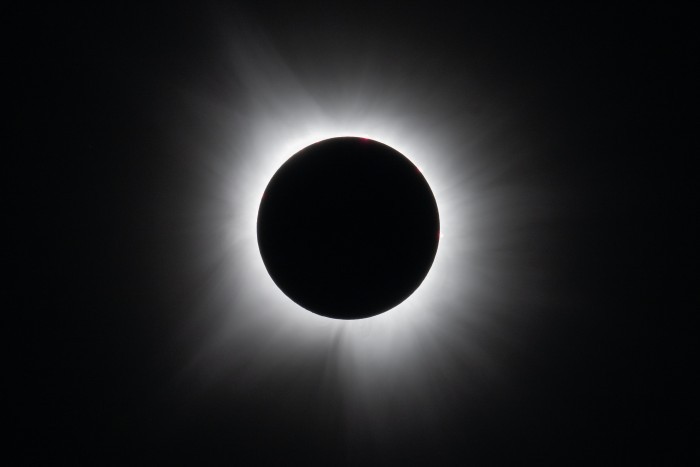
This mosaic of images from NASA's Cassini spacecraft shows three fan-like structures in Saturn's tenuous F ring. Such
PASADENA, CALIFORNIA (BNS): New images from NASA's Cassini spacecraft have shown icy particles in Saturn's F ring clumping into giant snowballs as the moon Prometheus makes multiple swings by the ring.
The gravitational pull of the moon sloshes ring material around, creating wake channels that trigger the formation of objects as large as 20 kilometers (12 miles) in diameter, a study published in the Astrophysical Journal, said.
"Scientists have never seen objects actually form before," said Carl Murray, a Cassini imaging team member based at Queen Mary,
University of London. "We now have direct evidence of that process and the rowdy dance between the moons and bits of space debris."
Saturn's thin, kinky F ring was discovered by NASA's Pioneer 11 spacecraft in 1979. Prometheus and Pandora, the small "shepherding" moons on either side of the F ring, were discovered a year later by NASA's Voyager 1.
Prometheus, the larger and closer to Saturn of the two moons, appears to be the primary source of the disturbances, scientists said. At its longest, the potato-shaped moon is 148 kilometers (92 miles) across.
It cruises around Saturn at a speed slightly greater than the speed of the much smaller F ring particles, but in an orbit that is just offset. As a result of its faster motion, Prometheus laps the F ring particles and stirs up particles in the same segment once in about every 68 days, they said.
Cassini scientists using the ultraviolet imaging spectrograph previously detected thickened blobs near the F ring by noting when starlight was partially blocked.
The newly-found F ring objects appear dense enough to have what scientists call "self-gravity." That means they can attract more particles to themselves and snowball in size as ring particles bounce around in Prometheus's wake, Murray said.
What gives the F ring snowballs a particularly good chance of survival is their special location in the Saturn system. The F ring resides at a balancing point between the tidal force of Saturn trying to break objects apart and self-gravity pulling objects together.
One current theory suggests that the F ring may be only a million years old, but gets replenished every few million years by moonlets drifting outward from the main rings. However, the giant snowballs that form and break up probably have lifetimes of only a few months.
The new findings could also help explain the origin of a mysterious object about 5 to 10 kilometers (3 to 6 miles) in diameter that Cassini scientists spotted in 2004 and have provisionally dubbed S/2004 S 6. This object occasionally bumps into the F ring and produces jets of debris.
"The new analysis fills in some blanks in our solar system's history, giving us clues about how it transformed from floating bits of dust to dense bodies," said Linda Spilker, Cassini project scientist at NASA's Jet Propulsion Laboratory. "The F ring peels back some of the mystery and continues to surprise us."
 Previous Article
Previous Article Next Article
Next Article













The Indian Air Force, in its flight trials evaluation report submitted before the Defence Ministry l..
view articleAn insight into the Medium Multi-Role Combat Aircraft competition...
view articleSky enthusiasts can now spot the International Space Station (ISS) commanded by Indian-American astr..
view article